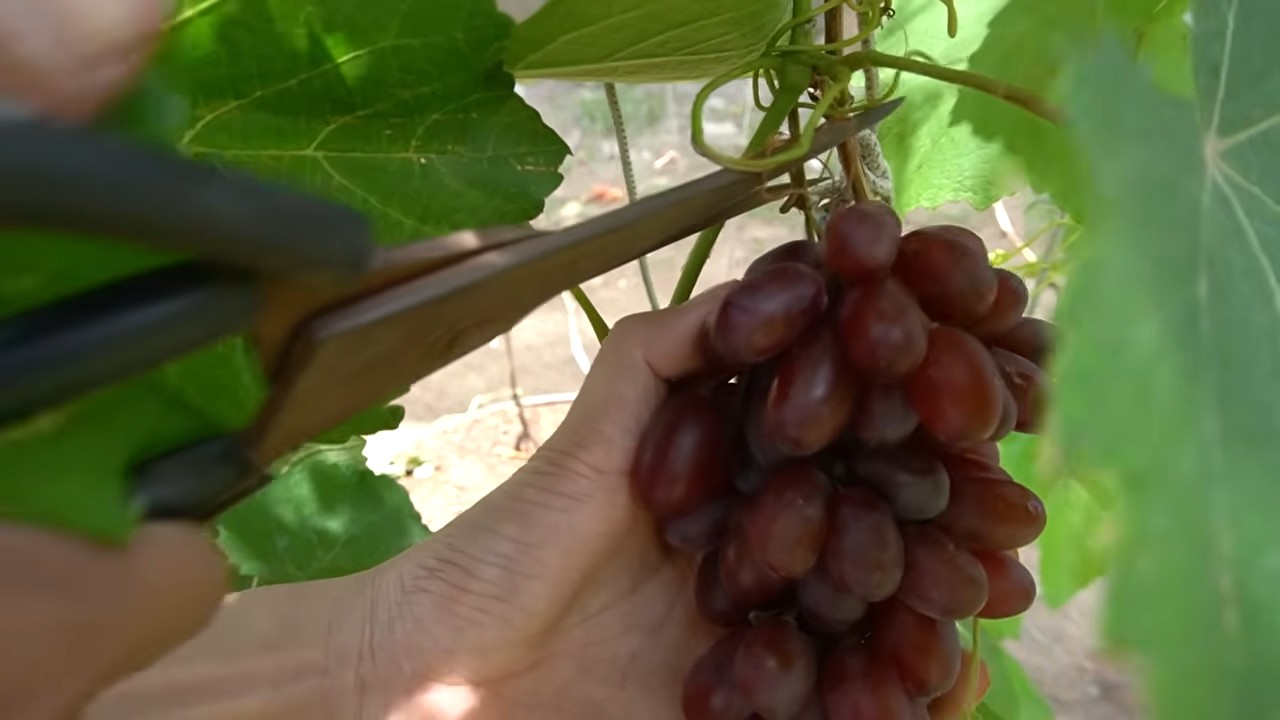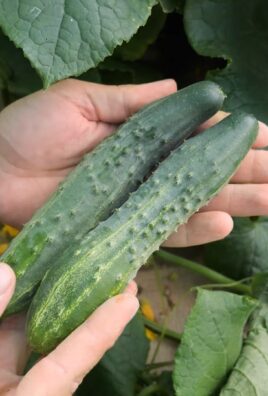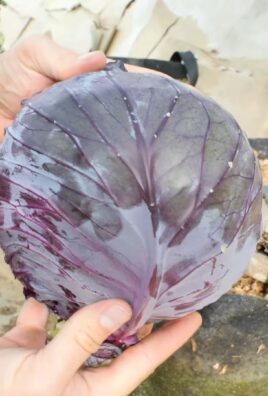Grow grapes in your backyard? Imagine stepping outside your back door and plucking juicy, sun-ripened grapes straight from the vine! It sounds like a dream, right? Well, it doesn’t have to be! For centuries, cultivating grapes has been a cherished tradition, from the ancient vineyards of the Mediterranean to the sprawling estates of Napa Valley. The art of viticulture, or grape growing, is deeply woven into our history and culture, representing abundance, celebration, and the simple pleasures of life.
But you don’t need a sprawling vineyard to enjoy the fruits of your labor. I’m here to tell you that with a few clever DIY tricks and a little know-how, you can successfully grow grapes in your backyard, no matter the size of your space. In today’s world, where we’re increasingly conscious of where our food comes from, growing your own grapes offers a fantastic way to connect with nature, enjoy fresh, healthy produce, and even save money. Plus, who wouldn’t love the bragging rights of serving homemade grape juice or creating your own backyard wine blend? This guide will equip you with easy-to-follow DIY hacks that will transform your backyard into a thriving grape oasis. Let’s get started!

Growing Grapevines in Your Own Garden: A Step-by-Step Guide
Hello wine lovers! Have you ever imagined growing your own grapes in the garden? It might sound intimidating, but with a little patience and the right steps, you can soon be harvesting your own grapes. I’ll show you how!
Choosing the Right Grape Variety
Before we get started, it’s important to choose the right grape variety for your climate and needs. Not all grapes are the same, and some thrive better in certain regions than others.
- Climate Zone: Find out about your climate zone. Some grape varieties are more cold-hardy than others. In colder regions, you should consider varieties like ‘Marquette’, ‘Frontenac’, or ‘Valiant’. In warmer regions, you have a wider selection, such as ‘Cabernet Sauvignon’, ‘Merlot’, or ‘Zinfandel’.
- Intended Use: Do you want table grapes for eating fresh, wine grapes for making wine, or both? Table grapes are usually larger and sweeter, while wine grapes have a higher acidity.
- Disease Resistance: Choose varieties that are resistant to common vine diseases like powdery mildew or downy mildew. This reduces the need for chemical treatments.
- Ripening Time: Consider the ripening time of the grapes. Early-ripening varieties are ideal for regions with short summers.
I recommend getting advice from a local nursery or a vine nursery. They can recommend the best varieties for your region.
Finding the Perfect Location
The location is crucial for the success of your grapevines. They need plenty of sun and well-draining soil.
- Sun: Grapevines need at least 6-8 hours of direct sunlight per day. The more sun, the better!
- Soil: The soil should be well-draining to avoid waterlogging. Grapevines do not tolerate “wet feet.” A slightly sandy or loamy soil is ideal.
- Wind Protection: Some wind protection is advantageous to shield the vines from strong winds that can damage the shoots. A wall, fence, or hedge can help here.
- Space: Grapevines need space to grow. Plan for enough distance between the vines (about 2-3 meters) and to other plants.
Preparing the Soil
Well-prepared soil is the foundation for healthy grapevines.
- Soil Test: Conduct a soil test to determine the pH and nutrient content of the soil. This will help you improve the soil specifically.
- Soil Improvement: Loosen the soil deeply (at least 60 cm deep). Mix in compost, well-rotted manure, or other organic materials to improve the soil structure and nutrient content.
- Adjust pH: The ideal pH for grapevines is between 6.0 and 7.0. Adjust the pH if necessary with lime (for soil that is too acidic) or sulfur (for soil that is too alkaline).
- Improve Drainage: If the soil drains poorly, you can install a drainage system to prevent waterlogging.
Planting the Grapevines
Now comes the exciting part: planting the grapevines!
- Planting Time: The best time to plant grapevines is in the spring (after the last frost) or in the fall (before the first frost).
- Dig the Planting Hole: Dig a planting hole that is twice as wide and deep as the vine’s root ball.
- Prepare the Vine: Carefully remove the pot and gently loosen the root ball.
- Insert the Vine: Place the vine in the planting hole so that the grafting union (the swelling on the stem) is about 5-10 cm above the soil surface.
- Fill the Planting Hole: Fill the planting hole with the prepared soil and press it down lightly.
- Water In: Water the vine thoroughly.
- Mulch: Apply a layer of mulch (e.g., straw, bark mulch) around the vine to retain moisture in the soil and suppress weed growth.
Installing the Trellis System
Grapevines are climbing plants and need a trellis system to grow and thrive properly. There are various trellis systems, but I recommend a simple wire trellis.
- Set Posts: Set sturdy posts (e.g., wood or metal) at a distance of about 3-4 meters along the vine row. The posts should be at least 1.80 meters high.
- Run Wires: Stretch wires between the posts at different heights (e.g., at 60 cm, 120 cm, and 180 cm). Use galvanized wire or stainless steel wire to prevent rust.
- Tie the Vines: Tie the young shoots of the vines to the wires. Use soft tying material (e.g., raffia or special vine ties) to avoid damaging the shoots.
Caring for the Grapevines
Caring for the grapevines is crucial for a bountiful harvest.
- Watering: Water the vines regularly, especially during dry periods. Make sure the soil does not dry out.
- Fertilizing: Fertilize the vines in the spring with a special vine fertilizer or compost.
- Pruning: Pruning is one of the most important care measures. It influences the yield and quality of the grapes. Learn about the different pruning methods and apply them accordingly.
- Disease and Pest Control: Regularly check the vines for diseases and pests. If necessary, you can use organic or chemical pesticides.
- Weed Control: Keep the area around the vines free of weeds. Weeds compete with the vines for water and nutrients.
Harvesting the Grapes
After all the work, the harvest finally comes!
- Determine Ripeness: The ripening time of the grapes depends on the variety and weather conditions. Pay attention to the color, taste, and sugar content of the grapes.
- Harvest Grapes: Cut the grape clusters with sharp scissors. Be careful not to damage the berries.
- Process Grapes: Enjoy the grapes fresh from the vine or process them into juice, jam, or wine.
Additional Tips
- Protection from Birds: Birds love grapes! Protect your harvest with nets.
- Winter Protection: In cold regions, you should protect the vines in winter with fleece or straw.
- Patience: Grapevines need time to grow and bear fruit. Be patient and don’t give up!
I hope this guide helps you grow your own grapevines in the garden. It is a rewarding experience that will bless you with delicious grapes. Good luck

Conclusion
So, there you have it! Growing grapes in your backyard might seem like a daunting task reserved for seasoned viticulturists, but with a little planning, patience, and the right DIY approach, you can transform your outdoor space into a personal vineyard. This isn’t just about cultivating fruit; it’s about creating an experience, a connection to nature, and the satisfaction of enjoying the literal fruits of your labor.
Why is this DIY trick a must-try? Because it empowers you to take control of your food source, reduces your reliance on commercially grown grapes (often treated with pesticides), and offers a unique and rewarding hobby. Imagine plucking sun-ripened grapes straight from the vine, knowing you nurtured them from start to finish. The taste difference alone is worth the effort! Plus, a thriving grapevine adds beauty and character to your landscape, providing shade and visual interest throughout the year.
But the benefits extend beyond the tangible. Gardening, in general, is a fantastic stress reliever. Tending to your grapevines provides a mindful activity that allows you to disconnect from the digital world and reconnect with the natural rhythms of the seasons. It’s a chance to learn, experiment, and develop a deeper appreciation for the complexities of plant life.
Now, let’s talk about variations and suggestions. Don’t feel limited to just one type of grape. Experiment with different varieties to find the ones that thrive best in your climate and suit your taste preferences. Consider table grapes for snacking, wine grapes for crafting your own homemade wine (a truly ambitious project!), or even seedless varieties for easy eating. You can also explore different training methods, such as the cordon system or the pergola system, to create a visually stunning and productive grapevine structure.
Think about companion planting as well. Certain herbs and flowers can deter pests and attract beneficial insects, creating a healthier and more balanced ecosystem around your grapevines. Marigolds, basil, and lavender are all excellent choices.
And remember, growing grapes in your backyard is a journey, not a destination. There will be challenges along the way – pests, diseases, unexpected weather – but these are all opportunities to learn and grow (pun intended!). Don’t be afraid to seek advice from local gardening experts, online forums, or your fellow grape-growing enthusiasts.
We wholeheartedly encourage you to give this DIY trick a try. Start small, be patient, and don’t be afraid to experiment. The rewards – both tangible and intangible – are well worth the effort. And most importantly, we want to hear about your experience! Share your photos, tips, and challenges in the comments below. Let’s create a community of backyard grape growers and inspire others to embark on this rewarding journey. Let us know what varieties you chose, what challenges you faced, and what successes you celebrated. Your insights could be invaluable to someone just starting out. So, grab your gardening gloves, choose your grape variety, and get ready to experience the joy of growing your own grapes in your backyard!
Frequently Asked Questions (FAQ)
Q: What is the best time of year to plant grapevines?
A: The best time to plant grapevines is typically in early spring or late fall, when the plants are dormant. This allows them to establish their root systems before the heat of summer or the cold of winter sets in. In warmer climates, late fall is often preferred, while in colder climates, early spring is generally recommended. Check your local climate and consult with a local nursery for the best timing in your specific area.
Q: How much space do grapevines need?
A: Grapevines need a significant amount of space to thrive. Generally, you should allow at least 8-10 feet between vines and 10-12 feet between rows. This spacing allows for adequate sunlight and air circulation, which are crucial for healthy growth and fruit production. The exact spacing may vary depending on the variety of grape and the training system you choose.
Q: What kind of soil is best for growing grapes?
A: Grapes prefer well-drained soil that is slightly acidic to neutral (pH 6.0-7.0). They don’t like “wet feet,” so avoid planting them in areas where water tends to pool. Before planting, it’s a good idea to amend the soil with compost or other organic matter to improve drainage and fertility. A soil test can help you determine the pH and nutrient levels of your soil and make any necessary adjustments.
Q: How often should I water my grapevines?
A: Newly planted grapevines need regular watering to establish their root systems. Water deeply once or twice a week, especially during dry periods. Once the vines are established, they are relatively drought-tolerant and may only need watering during prolonged dry spells. Avoid overwatering, as this can lead to root rot.
Q: Do grapevines need fertilizer?
A: Grapevines benefit from regular fertilization, especially during their first few years. Use a balanced fertilizer specifically formulated for fruit trees or grapevines. Apply fertilizer in early spring, before the vines begin to actively grow. Avoid over-fertilizing, as this can lead to excessive vegetative growth at the expense of fruit production. A soil test can help you determine the specific nutrient needs of your vines.
Q: How do I prune grapevines?
A: Pruning is essential for maintaining the health and productivity of grapevines. The best time to prune is in late winter or early spring, before the buds begin to swell. The specific pruning method will depend on the variety of grape and the training system you choose. Generally, you’ll want to remove dead, damaged, or diseased wood, as well as any suckers or water sprouts. Consult with a local expert or online resources for detailed pruning instructions specific to your grape variety and training system.
Q: How do I protect my grapevines from pests and diseases?
A: Grapevines can be susceptible to a variety of pests and diseases, including aphids, Japanese beetles, powdery mildew, and black rot. Regular monitoring is key to detecting problems early. Encourage beneficial insects by planting companion plants. If necessary, use organic pesticides or fungicides to control pests and diseases. Choose disease-resistant grape varieties to minimize problems.
Q: How long does it take for grapevines to produce fruit?
A: It typically takes 2-3 years for grapevines to begin producing fruit. The first year, the vines will focus on establishing their root systems. The second year, they will begin to grow more vigorously. By the third year, you should start to see some fruit production. Full fruit production typically occurs in 4-5 years.
Q: Can I grow grapes in containers?
A: Yes, you can grow grapes in containers, but it requires careful planning and management. Choose a large container (at least 20 gallons) with good drainage. Select a dwarf or compact grape variety that is well-suited for container growing. Use a high-quality potting mix and provide regular watering and fertilization. Container-grown grapevines may need to be pruned more frequently than those grown in the ground.
Q: What are some good grape varieties for beginners?
A: Some good grape varieties for beginners include ‘Concord’ (a classic American grape), ‘Reliance’ (a seedless red grape), and ‘Niagara’ (a white grape). These varieties are relatively easy to grow and are known for their disease resistance and good fruit production. Consult with a local nursery to choose varieties that are well-suited to your climate and soil conditions.




Leave a Comment